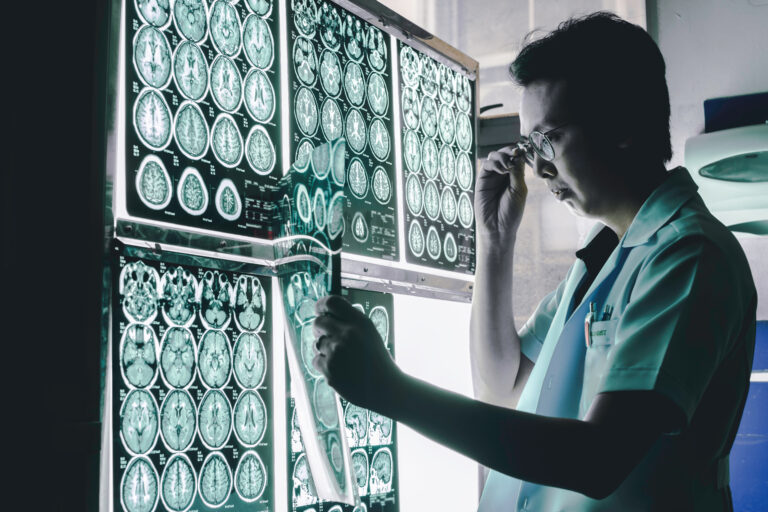When you think about detecting Alzheimer’s disease, your first thought might be to get a cognitive test or a brain scan. But did you know that your eyes can also provide valuable information about your risk for developing this debilitating disease?
Alzheimer’s disease is the most common form of dementia, affecting millions of people worldwide. It is a progressive brain disorder that slowly destroys memory and thinking skills, and eventually leads to the inability to carry out simple daily tasks. While there is no known cure for Alzheimer’s, early detection can lead to better management of symptoms and potentially slow down the progression of the disease.
So, how can your eyes give you a glimpse into your Alzheimer’s risk? Let’s dive into the various ways in which your eyes can provide valuable clues about your brain health.
The Eye-Brain Connection
The eye is often referred to as the “window to the soul,” but did you know it is also a window to your brain? The eye and the brain are closely connected through the optic nerve, which carries visual information from the eye to the brain. This connection means that any changes in the brain can also be reflected in the eye.
One of the key indicators of Alzheimer’s disease is changes in the brain, specifically the buildup of amyloid plaques and tau tangles. These proteins disrupt communication between brain cells and ultimately lead to their death. Researchers have found that these same proteins can also accumulate in the eye, particularly in the retina – the light-sensitive layer at the back of the eye.
Retinal Imaging
Retinal imaging is a non-invasive procedure that allows doctors to take high-resolution images of the retina. It is often used to diagnose and monitor eye diseases such as glaucoma and macular degeneration. However, recent studies have shown that retinal imaging can also detect changes associated with Alzheimer’s disease.
In one study, researchers used retinal imaging to detect amyloid plaques in the retinas of participants with Alzheimer’s disease. They found that the amount of these plaques in the retina was significantly associated with the amount found in the brain, suggesting that the eye may serve as a reliable biomarker for Alzheimer’s.
Another study used retinal imaging to detect changes in the thickness of the retina – a key indicator of Alzheimer’s disease. The researchers found that participants with thinner retinas were more likely to have cognitive impairment and a higher risk of developing Alzheimer’s.
Changes in Eye Movements
Have you ever noticed that as you age, your eye movements become slower and less accurate? This decline in eye movement control is a normal part of aging, but it can also be an early indicator of cognitive decline and Alzheimer’s disease.
In a study of over 3,000 older adults, researchers found that slow eye movements were associated with a higher risk of developing Alzheimer’s disease. They also found that this decline in eye movements was present even before participants showed any signs of cognitive impairment.
The connection between eye movements and Alzheimer’s is due to the brain’s frontal lobe, which controls voluntary eye movements and is also responsible for memory and decision-making. Damage to this area of the brain can result in both slow eye movements and cognitive decline.
Assessing Visual Function
As Alzheimer’s disease progresses, it can affect a person’s vision and visual perception. For example, some individuals may have difficulty recognizing familiar objects or people, while others may struggle with depth perception or visual-spatial skills.
These changes in visual function can be a result of the brain’s deterioration, but they can also be early indicators of cognitive decline and Alzheimer’s. In fact, some research suggests that visual changes may occur even before other cognitive symptoms are noticeable.
One study found that individuals with Alzheimer’s were more likely to have problems with contrast sensitivity – the ability to distinguish between light and dark – compared to those without the disease. This suggests that testing for visual function could be an important tool in detecting Alzheimer’s risk.
Conclusion
While more research is needed to fully understand the connection between the eyes and Alzheimer’s disease, there is growing evidence that the eye can provide valuable information about one’s risk for developing this condition. Retinal imaging, eye movements, and visual function assessments are all promising tools in detecting early signs of Alzheimer’s.
It’s essential to remember that changes in the eye do not necessarily mean a person will develop Alzheimer’s disease. However, monitoring these changes can help identify those at risk and potentially lead to early intervention and management of symptoms. If you have concerns about your eye health or cognitive function, don’t hesitate to talk to your doctor.
In the fight against Alzheimer’s disease, every piece of information is valuable. So, remember to take care of your eyes – they may hold the key to detecting this disease early on and improving the chances of successful treatment.





